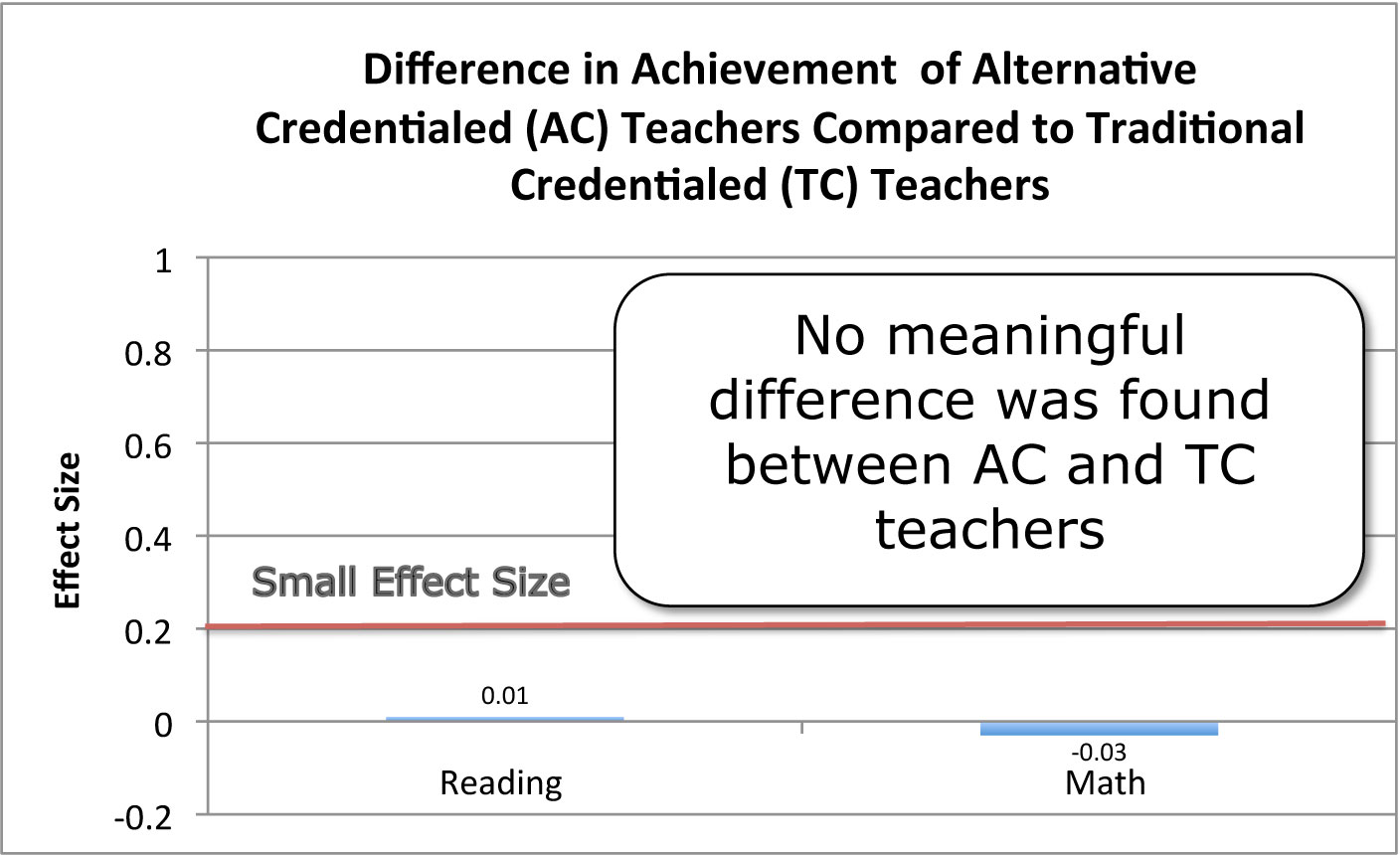Which credential process produces better teachers: traditional or alternative?
Why is this question important? To fill a critical teacher shortage that began in the 1980s, classroom teachers who obtained credentials through alternative credential models are teaching significant numbers of students. No Child Left Behind has made it a goal to ensure that all students be taught by teachers who are fully qualified. To meet this challenge, schools need to devote important resources toward resolving the issue of which preparation method produces effective teachers. Before we spend these funds, it is important to know if reducing the ranks of alternatively credentialed teachers is worth the investment.
See further discussion below.

Source(s): An Evaluation of Teachers Trained Through Different Routes to Certification
Result(s):
- There was no statistically significant difference in performance between students of alternative credentialed teachers and those of traditional credentialed teachers. Variation in student achievement was not strongly linked to the teacher's chosen preparation route or to other measured teacher characteristics.
- There is no evidence from this study that greater levels of teacher training coursework were associated with the effectiveness of AC teachers in the classroom.
Implication(s): There are three important conclusions to be derived from this study:
- Any increased cost that may be incurred by requiring teachers to attend TC programs needs to be weighed against the fact that students are not likely to receive significant benefit from this approach compared with AC programs.
- Additional research needs to be conducted to establish the content of credential programs. We need to ask, are we providing teachers the appropriate content and are teachers mastering the core curriculum in both TC and AC models and, more important, are these linked to student achievement?
- Before investing significant resources in the fully credentialed as required by No Child Left Behind, we would be wise to ensure this makes a difference in student achievement.
Author(s): Jill Constantine, Daniel Player, Tim Silva, Kristin Hallgren, Mary Grider, and John Deke
Publisher(s): Institute of Education Sciences, U.S. Department of Education, 2009
Study Description: The study took two years to complete. Schools could be included in the study only if they had at least one eligible AC and one eligible TC teacher in the same grade, in kindergarten through 5th grade. Within each school, students in the same grade were randomly assigned to either an AC teacher or a TC teacher.
- Both the AC and the TC programs with teachers in the study were diverse in the total instruction they required for their candidates.
- There were no statistically significant differences between the AC and TC teachers in their average scores on college entrance exams, the selectivity of the college that awarded their bachelor's degrees, or their levels of educational attainment.
Definition(s): Traditional Credential Program (TC): Teachers complete the credential program before beginning to teach.
Alternative Credential Program (AC): Teachers begin teaching before completing certification requirements.
Citation: Constantine, J., D. Player, T. Silva, K. Hallgren, M. Grider, and J. Deke, 2009. An Evaluation of Teachers Trained Through Different Routes to Certification, Final Report (NCEE 2009- 4043). Washington, DC: National Center for Education Evaluation and Regional Assistance, Institute of Education Sciences, U.S. Department of Education.
